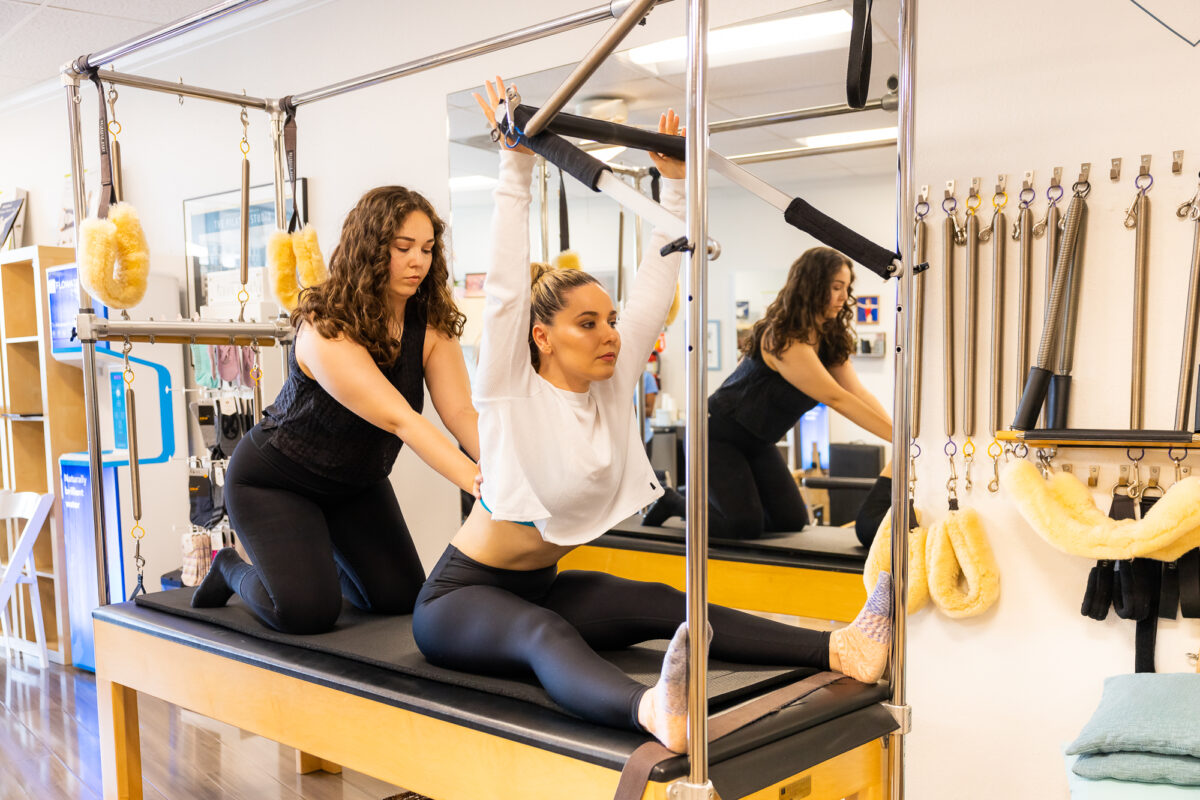Stacking exercises (also known as sequencing) to create a workout routine is a method used in most exercise programs. Stacking can be accomplished with one fitness regimen or cross-training to combine many different exercise approaches. In Pilates specifically, a series of movements is designed thematically and with intentional ordering to create a stack—a personalized workout. The advantage to knowing how to stack Pilates moves for your workouts means you can fit a Pilates practice in no matter how restricted you are on time. Creating an effective, modified workout that suits your lifestyle can be the key to ensuring regular, daily Pilates practice.
Need help sequencing Pilates workouts? Contact the Westwood Pilates instructors at Sheppard Method Pilates to schedule your first class now!
What Is Sequencing in Pilates?
Sequencing comes from Joseph Pilates’ concept of Contrology, and his original sequence of 34 mat Pilates moves can be found in his book, Return to Life. These mat exercises are to be performed in exact order, as one cohesive session, and Joseph Pilates emphasized the importance of performing each move in precise order.
While this sequence is an amazing routine, modern Pilates has adapted to encourage a variety of workouts and routines, so you can incorporate Pilates practice into your daily life, regardless of time restriction, access, or ability.
How to Stack Pilates Moves For Your Workout
When you want to stack Pilates moves to create your own workouts, there are some key guidelines to ensure you are approaching your practice as true to the Pilates form as possible.
- Ordering is important: While most Pilates mat classes don’t follow the original Routine to Life sequence in full, it is still best to mimic the pattern Joseph Pilates established. Start with moves that tend to warm the body up and center your mind. For full-body workouts, you can start standing or on all fours to bring blood flow to the body. You can also place the more difficult (usually the most demanding of the core) towards the middle, so you can perform optimally after warming, thereby decreasing the risk of injury or improper form. You don’t want to move from complex to easy moves without transitions. Your ordering should make sense so that each move can transition seamlessly into the next as one graceful routine.
- Use a thematic approach: It can be overwhelming to select Pilates moves to stack. To simplify this process, choose a theme. This theme can center your workout around an area of the body like the abs or glutes, a goal like cardio-building, or even a prop like a magic circle or foam roller. Then, select from the Pilates moves that fit your theme.
- Carve out the appropriate amount of time: The more of a full body workout, the more moves you will want to stack, and the more time you will need. This is also true if you want to incorporate a higher-intensity workout to get your heart pumping. If you are theming your workout by target area, you can limit this window of time considerably. Don’t have 30-40 minutes for a full body sequence? Take a third of that full-body workout and only do the sequence of moves that target the abs or lower body. Just remember, even just ten minutes of Pilates practice in a day is better than zero!
- Determine the intensity you want: Are you looking to work up a serious sweat? Or are you wanting a more restorative practice? Choosing moves that fit your goals of the day can help lead to a more rewarding practice. Cardio-building and intense ab moves can make a maximum effort full body workout, while slower, controlled moves that focus on mobility and breathwork can be perfect for morning or evening practices, or even stacked onto a run or HIIT workout.
- Less is more: Rather than trying to pack as many moves as possible into a short amount of time, think about areas of the body (as well as right and left) and segment your workout. You don’t need to spend an equal amount of time in each segment or spend a certain amount of time performing standing moves as floor moves. Instead, choose a few moves for each segment, focusing more effort on the areas you are looking to target.
- End in a cool down: you may or may not incorporate a separate full warm-up into your Pilates stack, but you should leave time in the end to sit and enact cleansing breaths and set an intention for the rest of your day to take in all the good you’ve given your body.
Learning More About Pilates Stacking and Sequencing
At Sheppard Method Pilates of Westwood, we have a number of offerings to familiarize yourself more with Pilates moves. When you study Pilates, your understanding of the approaches, methods, and movements move beyond surface-level workout routines, and you can design your own Pilates stack with better intention. In our intimate workshops, we have designed programs to deepen your relationship with Pilates and also understand specific concentrations. We also offer private and semi-private Pilates classes, and sessions met in the comfort of your own home, as well as beginner group classes in our boutique Westwood studio. No matter your level or ability we are here to help inform and welcome you into the Pilates community.
Call the Westwood Pilates instructors at Sheppard Method Pilates to book your first class and transform your body from the inside out!

